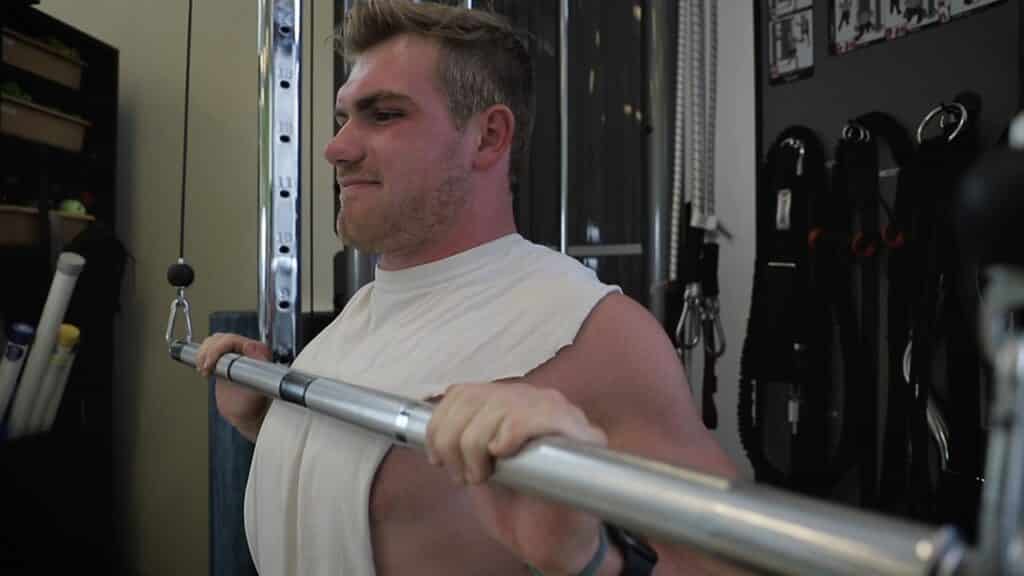No matter the sport, proper strength and conditioning is crucial to improve performance and prevent injuries. But how young is too young to start training? Luckily, our partners at Children's Hospital Colorado have experts to guide you through different programs and activities your child(ren) can do, even at a young age.
Sports are built on a series of specialized movements that require a solid strength and conditioning foundation, such as good control and balance. The problem is a lot of kids don’t get the proper sports preparation they need. When athletes miss out on learning essential strength and conditioning techniques, it can lead to an increased risk of injury.
“I think the key is our ability to change the mindset on how we start to get kids active,” says Shane Noffsinger, a physical therapist at Children’s Hospital Colorado’s Sports Medicine Center. “We need to focus on teaching young kids how to move for a variety of different sports before they actually start playing them. It’s a gradual and systematic way of allowing them to explore and practice good movement so that it reduces their risk of injury later.”
Strength training for young kids
Noffsinger recommends making these concepts fun and interesting for kids and getting creative with how you do it.
“Kids love to bear crawl,” he says. “And anytime they’re on their hands and feet, it will automatically help them start working on core control. Then, you can transition into a variety of different movements that will help with overall control of their torso.”
Other youth strength and conditioning exercises that help with control and balance include things like:
- Single leg standing
- Activities and balance drills with partners
- Proper lifting form, including how to bend knees and what your body position should look like
- Energy system development (such as running games)
- Incorporation of a ball
- Basic weight training, including how and when to increase load
Strength training for adolescent athletes
Children’s Colorado athletic trainer Adrienne Stewart says that tightness, imbalance and instability happen because of our natural human tendency to rely on our strongest muscles, like the quads. Adolescent athletes should train other muscles to work with their dominant muscles to activate, react and stabilize when they should.
In the legs, that means the hamstrings, hips and glutes. And in the shoulder, that’s the rhomboids and rotator cuff muscles.
Hitting the gym to lift weights once or twice a week can have huge benefits, says Stewart — although she cautions that strength training without proper form can be just as detrimental as not. It’s best to train with someone who knows what they’re doing.
“Most kids and teens will have athletic trainers at their school who will know how to teach and assist with rehabilitation exercises,” says Stewart.
Training at home with resistance bands is also a great way to go — or there’s always the internet. Stewart suggests watching some videos and getting comfortable with good form for an exercise before trying it with weights. The National Strength and Conditioning Association is a great resource for additional information.
At the very least, says Stewart, it pays to be versatile.
“Just stay active,” she says, “doing something other than your sport.”
Strength and conditioning at Children’s Colorado
Noffsinger’s and Stewart’s passion for good movement techniques stems from their work at Children’s Colorado. Their teams often spend months helping each athlete recover from injury. It’s both a physical and a mental process for the athletes, and it isn’t easy. That’s why, in addition to treating and educating athletes who arrive at Children’s Colorado for care, they’re using community partnerships to educate coaches, parents and athletes about reducing the risk of injury.
“We’re constantly collaborating with strength and conditioning programs at various performance facilities, high schools and club teams,” says Noffsinger. “And partnerships with organizations like the YMCA are the best way to expose young kids to these good movement techniques.”
They hope to create additional relationships with personal trainers and youth sports programs around the region. The more that they can be educators and a resource for local professionals, the more the so-called “movement” might catch on — pun intended.

